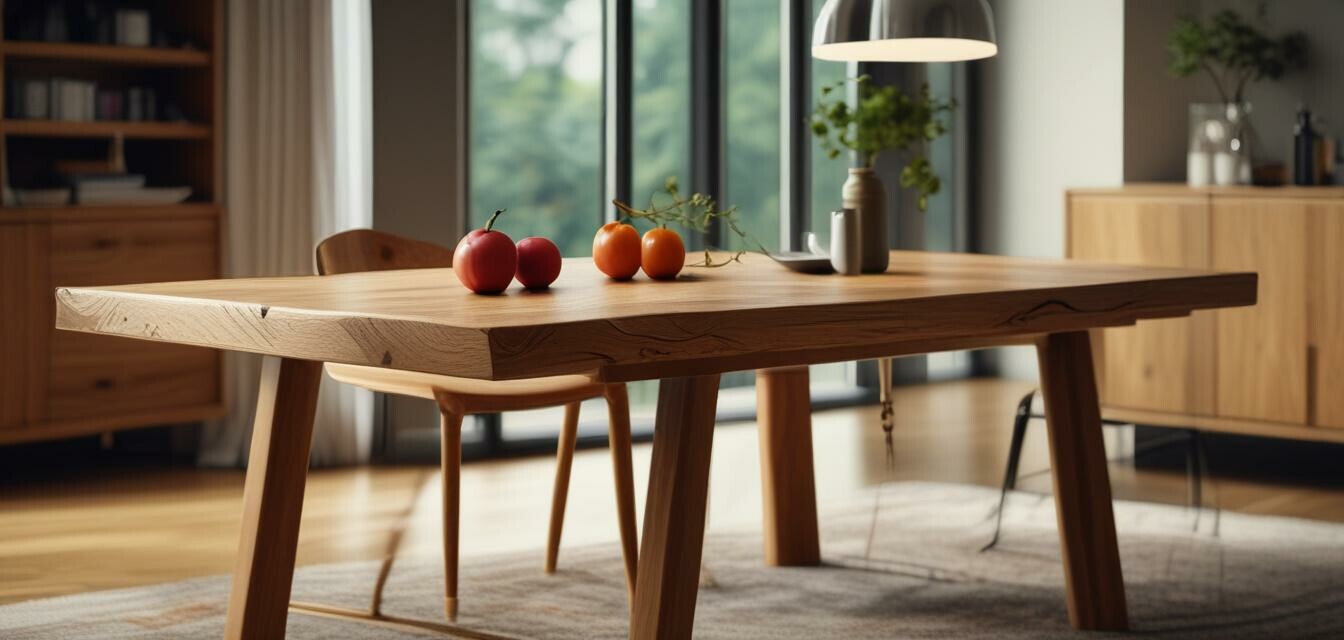
Exploring the Future of Solid Oak Furniture Materials
Key Takeaways
- The solid oak furniture industry is embracing innovative materials to enhance durability and aesthetics.
- Emerging technologies improve sustainable practices in oak sourcing and production.
- Consumer preferences are shifting towards eco-friendly and customizable options.
- New finishes and treatments are making waves in the design of solid oak furniture.
- Understanding these trends can help you make informed furniture choices for your home.
As we move further into the 21st century, the solid oak furniture industry is dynamically evolving. With sustainability becoming a crucial focus, emerging materials, innovative technologies, and changing consumer preferences shape how solid oak furniture is designed and produced. In this article, we explore these trends and what they mean for the future of solid oak furniture.
Innovative materials in solid oak furniture
The selection of materials plays a significant role in the quality, durability, and appeal of solid oak furniture. Here are some innovative materials being introduced into the production process:
| Material | Description | Benefits |
|---|---|---|
| Engineered wood | A composite of wood fibers and adhesives that offer stability. | Resistant to warping, eco-friendly, and cost-effective. |
| Bamboo | A rapidly renewable resource that's strong and lightweight. | Sustainable, offers a unique aesthetic, and versatile. |
| Reclaimed wood | Wood sourced from old buildings and furniture, giving new life to materials. | Unique character, sustainable, and often more affordable. |
| Composite finishes | Advanced coatings that enhance durability and aesthetics. | Improve scratch resistance and extend the life of furniture. |
Technological advancements in solid oak furniture production
Technological innovations are transforming how solid oak furniture is manufactured. These advancements enhance production efficiency and improve the quality of the final product. Here are a few notable technologies:
- 3D printing: This technique allows for custom designs and shapes that were previously difficult to achieve.
- CNC machining: Precision machining ensures consistency in furniture pieces, enhancing quality control.
- Virtual reality: VR allows consumers to visualize furniture in their own spaces, enhancing purchasing decisions.
- Smart finishes: Coatings that respond to environmental conditions can increase the lifespan of oak furniture.
Shifting consumer preferences
Today's consumers are more aware of their choices, leading to shifts in purchasing preferences. Here are some trends worth noting:
| Trend | Description | Impact |
|---|---|---|
| Eco-consciousness | Consumers prefer sustainable materials and practices. | Increased demand for eco-friendly solid oak options. |
| Customization | Personalized designs reflect individual tastes. | Production processes adapt to meet customization demands. |
| Minimalism | Simplistic designs that focus on functionality. | Influences the designs of solid oak furniture, emphasizing practicality. |
| Quality over quantity | Consumers prioritize durable, well-crafted furniture. | Focus on craftsmanship and quality materials becomes essential. |
Sustainable practices in oak sourcing
As the awareness of sustainability increases, the solid oak furniture industry has adopted more eco-friendly practices. Innovations in sourcing and production are ensuring that oak can be harvested responsibly:
- Controlled forestry: Implementing responsible logging practices helps preserve oak forest ecosystems.
- Certification: Certifications such as FSC (Forest Stewardship Council) ensure that the wood is sourced from environmentally responsible forests.
- Sourcing locally: Reducing transportation costs and emissions by sourcing oak locally.
- Education: Raising awareness among consumers about sustainable practices in oak furniture sourcing.
Future trends in solid oak furniture design
Looking ahead, several trends may shape the design of solid oak furniture. Some notable predictions include:
- Blend of styles: Expect a fusion of traditional and contemporary styles, enhancing versatility in the market.
- Smart furniture: Integrating technology into furniture designs, catering to tech-savvy consumers.
- Natural aesthetics: A growing preference for organic shapes and textures inspired by nature.
- Multi-functional pieces: Furniture designs that adapt to various needs and spaces will become more prominent.
Conclusion
The solid oak furniture industry is on the brink of significant transformation. By embracing innovative materials, advanced technologies, and sustainable practices, manufacturers can cater to changing consumer preferences. As we look to the future, it is crucial to remain attuned to these developments, as they will undoubtedly shape the homes and interiors of tomorrow.
Pros
- Increased durability and longevity of solid oak furniture.
- Enhanced sustainability practices benefit the environment.
- Greater customization options meet diverse consumer needs.
- Innovative designs cater to modern aesthetics.
Cons
- Potential higher costs associated with eco-friendly practices.
- Consumer education required to fully understand new materials.
- Adapting to new technologies may be slow for some manufacturers.
For more insights into solid oak plus ideas for your interior, check out our News and Trends section.
Ready to explore our collection of beautiful solid oak furniture? Browse through our range of Accent Tables, Coffee Tables, and Dining Tables to find the perfect piece for your space.